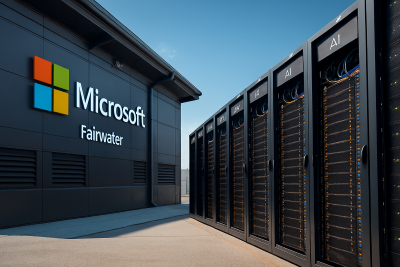 Microsoft AI Infra" class="wp-image-7427" style="width:840px;height:auto" srcset="https://edukatt.com/wp-content/uploads/2025/10/Microsoft-AI-Infra.png 400w, https://edukatt.com/wp-content/uploads/2025/10/Microsoft-AI-Infra-300x200.png 300w" sizes="(max-width: 400px) 100vw, 400px" />
Microsoft AI Infra" class="wp-image-7427" style="width:840px;height:auto" srcset="https://edukatt.com/wp-content/uploads/2025/10/Microsoft-AI-Infra.png 400w, https://edukatt.com/wp-content/uploads/2025/10/Microsoft-AI-Infra-300x200.png 300w" sizes="(max-width: 400px) 100vw, 400px" />I’ve been managing infrastructure since the days when a failed RAID controller could ruin your weekend. So when I heard about Microsoft’s $30 billion AI infrastructure push, I didn’t just skim the headlines—I dug in. Because let’s be honest: when hyperscale cloud providers make moves this big, it trickles down to every admin, architect, and developer trying to keep systems humming.
Why I’m Watching This Closely
I’ve spent the last few years migrating workloads to Azure, testing Copilot integrations, and poking around the Agent Framework in dev environments. The pace of change is wild. Microsoft’s latest investment isn’t just about building more data centers—it’s about laying the groundwork for AI-first infrastructure that’ll shape how we deploy, secure, and scale systems for years.
They’re not just throwing money at GPUs. We’re talking liquid-cooled clusters, sovereign cloud zones, and custom silicon designed to reduce dependency on Nvidia. If you’ve ever tried to provision a GPU VM during peak hours, you know why that matters.
What’s Actually Rolling Out
From what I’ve tracked, the Fairwater data center in Wisconsin is already being positioned as Microsoft’s flagship AI hub. It’s built for dense compute, low latency, and real-time workloads. Similar builds are underway in Norway, the UK, and under review in India and Japan.
The UK investment alone is pegged at $30B by 2028, with plans to deploy the country’s largest supercomputer. That’s not vaporware—it’s backed by partnerships with nScale and Aker JV, and it’s already influencing local AI policy and regulation.
The Agent Framework: Tried It, Liked It (Mostly)
I’ve tested the Agent Framework in a dev sandbox. It’s promising—autonomous agents that can tap APIs, make decisions, and handle tasks without constant human input. But not gonna lie, the orchestration layer still needs polish. Most guides say “just plug in your tools,” but I found myself debugging token scopes and permission errors for hours. Welcome to my world.
The Azure Outage That Reminded Us All
Just before this announcement, Azure Front Door had a meltdown that took down services across Europe, Africa, and the Middle East. I was helping a client in Dubai when their admin portal went dark. No alerts, no fallback. It was a stark reminder: hyperscale doesn’t mean invincible.
What Caught Me Off Guard
- Microsoft’s move to build its own AI chips? That’s a curveball. I used to think only Google and Amazon would go that route. But it makes sense—vertical integration means tighter control over performance and cost.
- The geopolitical angle is heating up. With the EU launching its “Apply AI” strategy and Horizon funding doubling to €3B, we’re seeing a full-blown AI arms race.
Lessons Learned
- Don’t assume cloud scale equals reliability. Always build for failover.
- Keep tabs on regional data laws—especially if you’re deploying across borders.
- Test new frameworks in dev before pitching them to clients. The Agent Framework is powerful, but not plug-and-play yet.
Final Thoughts
This isn’t just another cloud upgrade. Microsoft’s $30B investment is a signal: AI is no longer a feature—it’s the foundation. Whether you’re running hybrid setups or going full cloud-native, this shift will touch everything from your deployment scripts to your compliance checklists.
Ever tried to explain GPU provisioning to a finance team? You might need to do that more often now.
